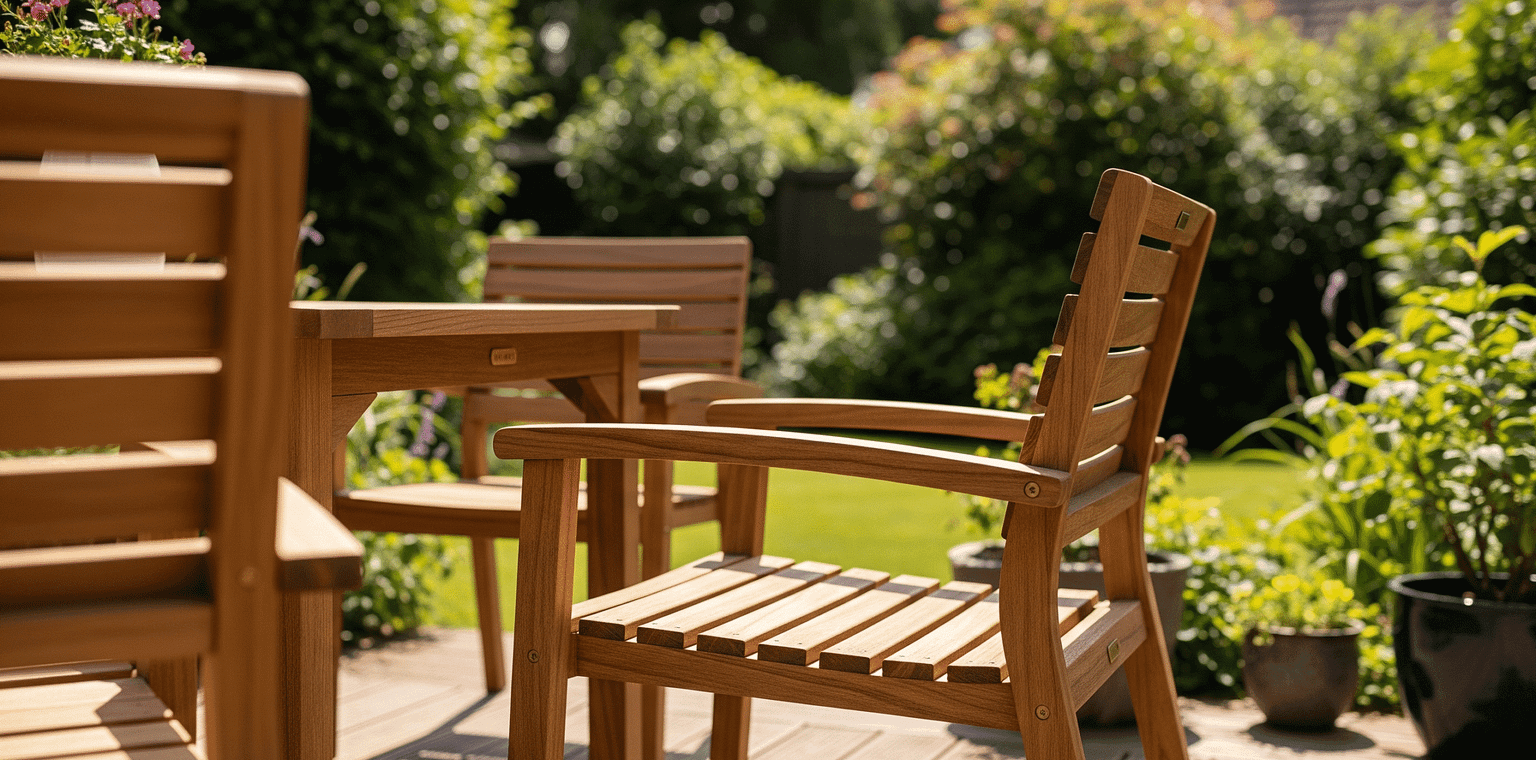The 5 Best Wood Types for Outdoor Furniture (That Won’t Fall Apart Next Season)

I’ll never forget the summer I built my first outdoor bench.
I used cheap pine from the big box store. Sanded it smooth. Stained it a rich walnut. Even added cute little brass screws.
By September?
It was gray.
Warping.
One leg was sinking into the grass.
My wife said, “It looks like it’s crying.”
She wasn’t wrong.
I’d learned the hard way: not all wood is created equal outdoors.
Some woods laugh at rain, shrug off UV rays, and stand strong for decades.
Others? They’re basically kindling with a finish.
After 10 years of building outdoor furniture — in Florida humidity, Arizona sun, and Midwest winters — I’ve tested them all.
And today, I’m giving you the only 5 wood types worth using for outdoor furniture.
No fluff. No “maybe this’ll work.” Just proven, durable, beautiful options that’ll still be standing when your neighbors’ plastic chairs are in the landfill.
Why Most Outdoor Furniture Fails (Before Summer’s Over)
Most beginners make one of two mistakes:
- They pick wood based on price → Pine looks cheap. It is cheap — and it fails fast.
- They skip the finish → Even the best wood needs protection from UV and moisture.
But the real secret?
Start with the right wood.
Everything else — finish, design, hardware — just builds on that foundation.
Get this wrong, and no amount of sealant will save you.
The 5 Best Wood Types for Outdoor Furniture (Ranked by Value + Durability)
1. Western Red Cedar — The All-Around Champion
Why it wins:
- Naturally contains thujaplicin, a compound that repels rot, insects, and fungi
- Lightweight and easy to work with
- Ages to a beautiful silvery-gray (or stays rich with finish)
- Affordable compared to exotics
Best for: Benches, Adirondack chairs, planters, pergolas
Price: $3.50 – $5.50 / B (mid-range)
Lifespan: 15–20 years (unpainted, unfinished)
🧑🔧 Daniel’s Story: I built a cedar planter box in 2018. Never sealed it. It’s still solid today — just a soft silver. My pine one from the same year? Compost.
2. Teak — The Luxury Standard
Why it wins:
- Packed with natural oils that make it virtually waterproof
- Extremely dense and stable (won’t warp or crack)
- Ages gracefully — never rots
- Used on million-dollar yachts for a reason
Best for: Dining sets, lounge chairs, high-end accents
Price: $18.00 – $28.00 / BF (premium)
Lifespan: 25–75+ years
Pro Tip: Look for FSC-certified teak to ensure it’s sustainably harvested.
3. Cypress — The Southern Secret Weapon
Why it wins:
- Contains cypressene, a natural preservative that fights decay
- Performs brilliantly in humid, wet climates (hello, Florida!)
- Takes stain beautifully if you want to keep the golden tone
- More affordable than teak or redwood
Best for: Deck furniture, outdoor cabinets, humid climates
Price: $4.00 – $6.50 / BF
Lifespan: 10–20 years
📌 Pair cypress with smart design from our Summer Woodworking Projects — like elevated bases to keep wood off wet ground.
4. White Oak (Quarter-Sawn) — The Hidden Gem
Why it wins:
- Tight grain structure resists moisture absorption
- Quarter-sawn white oak is especially stable (less movement)
- Beautiful grain that ages with character
- Great if you want a non-softwood option
Best for: Tables, chairs, structural elements
Price: $6.00 – $9.00 / BF
Lifespan: 10–15 years (with proper finish)
Warning: Avoid red oak — it’s porous and rots quickly outdoors.
5. Pressure-Treated Pine — The Budget Builder’s Choice
Why it wins:
- Treated with chemicals that resist rot and insects
- Dirt cheap and available everywhere
- Perfect for structural parts (legs, frames) hidden from view
Best for: Hidden frames, bench bases, kids’ play furniture
Price: $1.50 – $2.50 / BF
Lifespan: 10–15 years
Safety Note: Use ACQ-treated (not old CCA). And always wear a mask when cutting — the dust is no joke.
📌 If you’re building with pressure-treated wood, precision matters — even for hidden parts. Make sure your saw is dialed in with our Table Saw Blade Alignment Guide .
Woods to Avoid (No Matter How Pretty They Look)
❌ Pine (untreated) — Absorbs water like a sponge. Warps in weeks.
❌ Poplar — Soft, porous, and turns black with mold.
❌ Birch or Maple — Beautiful indoors, but cracks and rots fast outside.
❌ MDF or Plywood — Swells, delaminates, and disintegrates in rain.
Save these for indoor projects. Your outdoor furniture deserves better.
Pro Tips to Make Any Wood Last Longer
- Elevate it off the ground — Use feet, blocks, or casters. Standing water is the #1 killer.
- Seal every surface — Top, bottom, edges, end grain. Moisture sneaks in everywhere.
- Use stainless steel hardware — Regular screws rust and stain your wood.
- Design for drainage — Slats, gaps, and sloped surfaces let water escape.
- Reapply finish yearly — UV breaks down sealants. A quick refresh goes a long way.
Before You Cut Your First Board — Tune Your Saw
Here’s something no one tells you:
Your outdoor furniture is only as good as your cuts.
A misaligned table saw = crooked joints = gaps where water collects = rot.
I used to blame the wood. The weather. The finish.
Then I realized: my saw was off by 1/16”. That’s all it took to ruin the fit.
That’s why I created the FREE “Dead-Square Every Time” Table Saw Tune-Up Checklist.
It’s a 15-minute guide to calibrating your saw for perfect 90° cuts — no dial indicator needed.
It’s the first step to builds that last — not just survive the season.
You’ve Got This
Building outdoor furniture isn’t about fancy tools or exotic woods.
It’s about choosing wisely, building well, and respecting the elements.
Pick one of these 5 woods. Follow the tips. Take your time.
And in 10 years, when your neighbors are buying their third plastic set…
you’ll still be sitting in the chair you built.
Go make something that lasts.
— Daniel
HMZ Woodz
